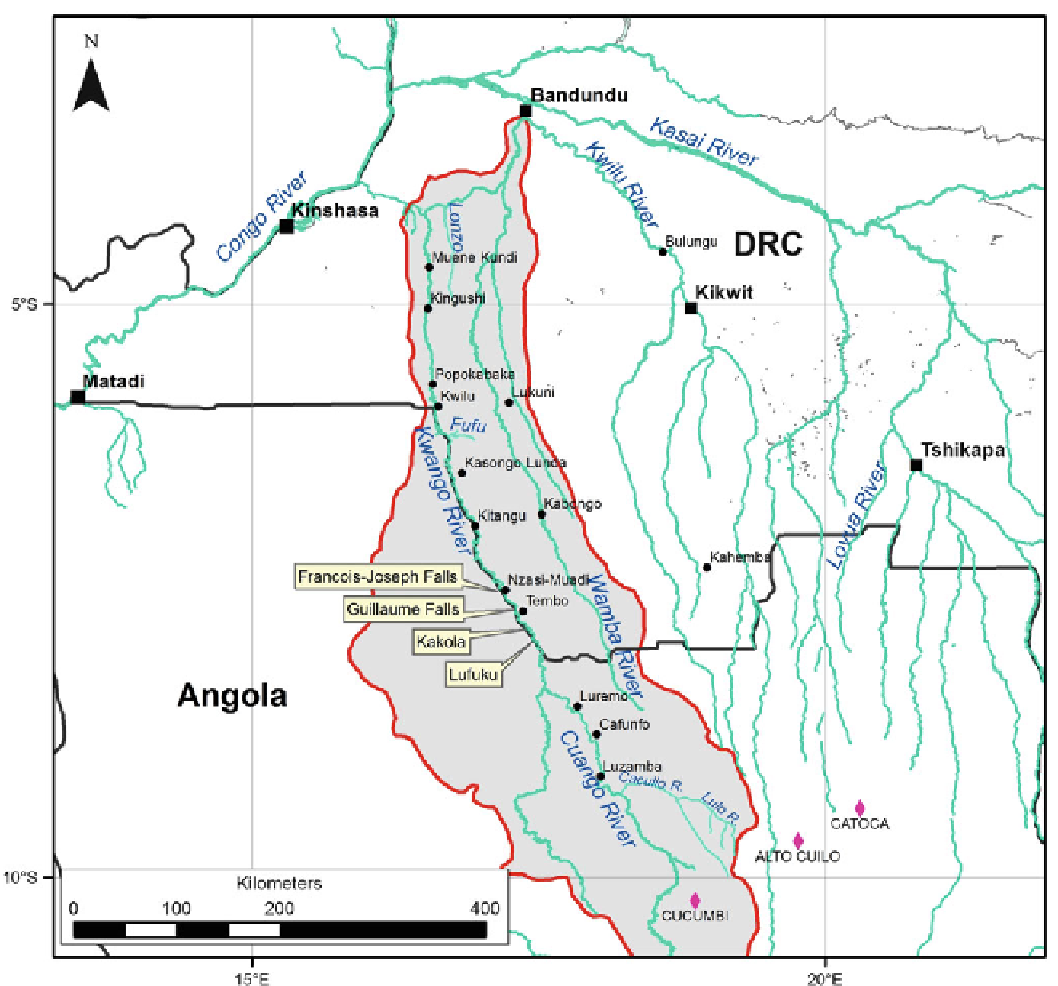Geology Reference
In-Depth Information
Fig. 16.2
Locality map of the Lower Kwango River Valley with main localities mentioned in the text
Drilling and pitting undertaken by Grant and Faucett in 1924
(Faucett
1924a
,
b
; Grant
1924a
) confirmed that diamond
grade results were higher between Popokabaka and Kasongo
Lunda, and between Kingushi and Muene Kundi (Fig.
16.2
).
Grades of between 0.01 and 0.39 cts/m
3
were obtained
between the Fufu tributary and Popokabaka (the largest
stone being 0.87 cts) (Grant
1924a
), and between 0.07 and
0.10 cts/m
3
near Kingushi and up to 0.61 cts/m
3
near Muene
Kundi but with average stone sizes between 0.04 and 0.06
cts/stn (Faucett
1924a
,
b
; Grant
1924a
). They also concluded
that the diamonds were restricted to the present river beds
bordering the flats, and that no diamonds were present in any
of the tributaries (Fieremans
1977
). However, after the
discovery of the Tshikapa alluvial diamond fields (1909)
and then the Mbuji Mayi diamond fields (1918), the search
for diamonds in other areas was less important and explo-
ration along the Kwango decreased significantly.
This changed in 1934 when the first two diamonds south
of the Francois-Joseph Falls were found (one of which was a
1.52 carat stone, the largest so far recorded) by Verdeyen
from
Formini`re
, whilst exploring on behalf of the
American
Congo Cy
. As a result, that same year, the Kwango River
was covered by mining permits allocated to the
Soci ´t ´
Mini
`
re de Lueta
with
Formini
`
re
responsible for the
prospecting and mining operations. Although Aderca spent
time exploring the river in 1937 and 1938 (Aderca
1939
), no

Search WWH ::

Custom Search